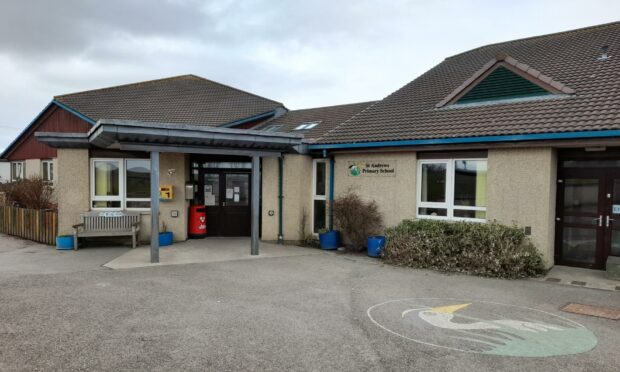An audit has shown why a planned extension project at a primary school in Orkney’s east mainland saw costs balloon out from £490,000 to more than £4.3m.
The changing needs of St Andrews Primary School, created by the introduction of new government legislation, were largely responsible for both increased costs and delays to the project.
Plans to expand the school first began to develop back in 2012, as the increasing school roll was recognised.
A stage 1 capital project appraisal put the predicted costs at around £490,000. However, as the project was developed, the latest approved plans showed the cost to be £4,324,000.
Three stage 2 appraisals were scrutinized and approved by councillors – one in 2014, another in 2017, and then a third in January last year.
The tender award letter was sent out on January 20 last year.
At a special general meeting of the council, it was agreed that an internal audit needed to be carried out. This would investigate the increased costs and delays.
Councillors called for audit into school extension’s rising costs
This audit report was viewed by the council’s monitoring and audit committee earlier today.
In terms of costs, the report notes the “competitive tension” in the procurement process. This has been created by “competitive external market prices in the current climate of uncertainty for undertaking this project”.
Aside from the changing scope of the project, extra costs were created between the appraisals put forward in 2017 and 2021.
These were inflation, by around £500,000, and an extra £350,000 was needed to cover new or changed fire and drainage legislation. There were also further costs around systems related to carbon-neutral issues.
In terms of why the project has been delayed, it was found that Orkney council has “significant levels” of slippage for capital projects.
The St Andrews School’s extension’s delays were mainly caused by changing government legislation and in-house staff resource priorities.
Government legislation changed the scope of what was needed at primary school
The original plans would have seen the school’s layout changed to create extra rooms using existing space.
However, as early as 2014, it was found that this wouldn’t meet the school’s future needs.
Government legislation increased nursery provision from 475 to 600 hours and introduced a requirement to support two-year-olds in school nurseries.
In 2016, the government also announced an expansion of funded early learning childcare, to 1,140 hours per year.
While this was delayed until August last year, this again changed the school’s needs again.
There was also a delay in the tendering process as the council’s small team dealt with other work.
During the meeting committee chairman John Richards laid out his understanding of the issue.
‘What we had planned to do with the facility is no longer adequate’
He said: “The government introduced new legislation in respect of early learning and child care after there was a proposal to increase this school due to the increasing school roll.
“Here we are planning to do something and all of a sudden the legislation changed. What it meant was, what we planned to do with the facility is no longer adequate.”
Far from being a damning report, no high-level recommendations were attached to the audit. However, it did come with one medium-level recommendation.
This said the council needs to develop guidance for when budgets are increased after tenders are received.
St Andrews Primary School serves the Holm, Deerness, Tankerness, and Toab areas. Today’s audit report states that it has 208 pupils and seven full-time classes.
